Who was the 'Thai bride' dumped in the hills?
- Published
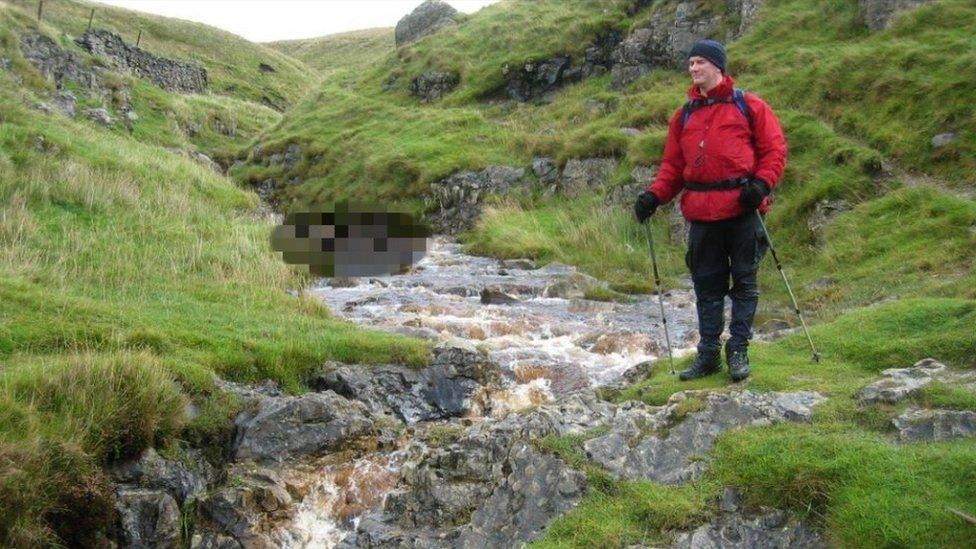
When Richard Hill posed for this picture, he did not realise a body was wrapped around the rocks behind him
Moments after Richard Hill posed for this picture, he and his friends discovered a corpse lying in the mountain stream. More than 14 years later, police remain baffled as to the identity of the woman dumped in the Yorkshire Dales. But forensic advances have at last offered a clue, giving weight to a new theory about the final years of her life.
Stormy weather battered the five walkers as they set off from the quaint village of Horton in Ribblesdale for Yorkshire's famous Three Peaks.
After reaching the summit of the smallest, Pen-y-ghent, they were forced back to flat land by the wind and rain and took a detour along the Pennine Way.
The group decided to stop near a network of caves known as Sell Gill Holes - it was a natural break point and a chance to grab a bite and take a few pictures.
Minutes after they were taken, walker Peter Goodhew spotted the body of a half-naked woman in the stream, curled around the jagged grey rocks.
"We were having a look around, peering down the cave, and then I glanced to my left and at first I thought it was a mannequin.
"But as I got up closer it was the missing fingernails that struck me. I realised then it was a corpse."
"He shouted that there was a dead body," said his friend Mr Hill.
"It was so surreal. It really shook me to the core and once it had all sunk in, what had happened, the next day I cried."

Cold case reviewers said an artist's impression released at the time was not necessarily an accurate reflection of her because it was based on her after death
Despite extensive inquiries, North Yorkshire Police has so far failed to answer the two most important questions: who is this woman and how did she die?
Examination of her body put her height at 4ft 11ins (149 cm) and her weight at about 10 stone (63kg).
She was believed to be aged somewhere between 25 and 35; her hair was shoulder length, and dark brown.
Pertinently, she was believed to be of south-east Asian origin. But this could only be narrowed down so far - she could have been from Thailand, the Philippines, Laos, Vietnam or Indonesia.

The Pennine-way footpath to Pen-y-ghent crosses the rail track at Horton in Ribblesdale, close to where the walkers began their trek
But no-one ever came forward to identify the woman, who those in Horton in Ribblesdale would come to call the Lady of the Hills.
Saddened by the lack of interest in her, the parish council organised her funeral, which more than 40 people attended.
She is buried in a plot in the village graveyard.
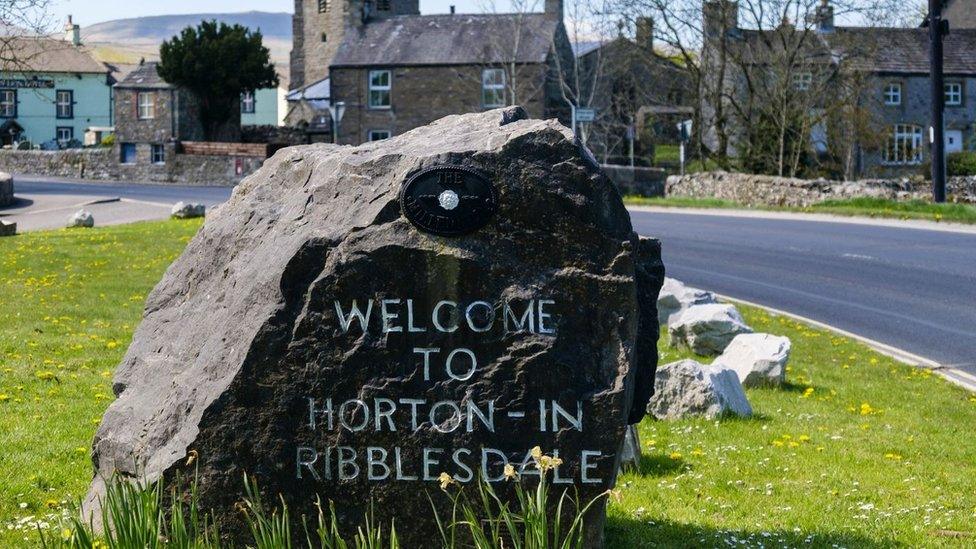
Villagers in Horton in Ribblesdale claimed the woman as their own
"It's an incredibly sad story. Everyone in the village was so upset at the thought of this young lady just being left all by herself," said Sheila Millman, who was council chairman at the time.
"We felt a responsibility for her, like she belonged to us and we wanted to make sure she had a final resting place should her family ever get traced."
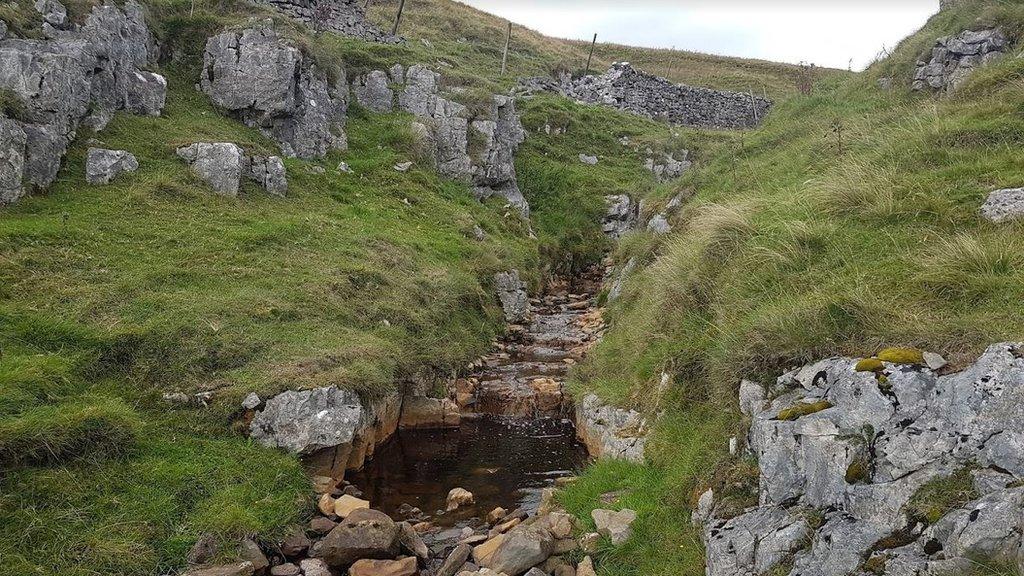
Police believe the woman was originally hidden behind the mound on the right and her body was dislodged by heavy rain
Inquiries by police were met with repeated dead ends.
Pathologists concluded she had been dead for between one and three weeks but there were no obvious signs of major trauma, such as being shot or bludgeoned, and they could not determine how she had died.
Decomposition of her organs meant doctors could also not say she died of a natural cause, such as by heart attack or stroke, but the lack of insect infestation suggested she had not been outside for long - perhaps only a few days.
Crucially, detectives favoured an explanation for her death that ruled out anything suspicious.
The fact she was found wearing only socks, a pair of green Marks & Spencer jeans, and a bra with broken hooks hanging off her left arm, suggested she might have become lost and died of hypothermia - the lack of clothes explained by a case of paradoxical undressing, where someone freezing to death might strip off under the illusion they are burning up.
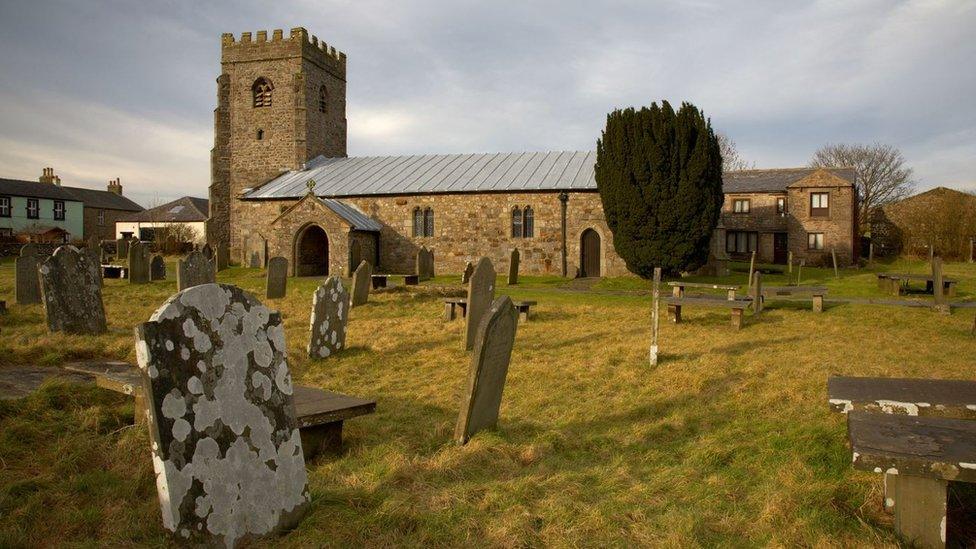
She was buried in the village graveyard after the parish council donated a plot
A trawl of missing person databases, inquiries with foreign embassies, and anthropology and orthodontic tests failed to come up with any leads about her identity.
The case was eventually passed to the cold case team, which took a fresh look in 2016 - and came up with rather different conclusions from the original investigating team.
It began to consider the line of inquiry that the woman may have been a "Thai bride-type", according to lead investigator, retired Det Ch Insp Adam Harland.
"The term Thai bride does not necessarily mean the woman comes from Thailand but that she is a lady who has taken up a relationship with a white gentleman and has come back to live in the UK in the late 1990s or early 2000s," he explained.
"The fact that no-one has reported her missing suggests the relationship has broken down and her disappearance was because she's 'gone back home'.
"In this case, her partner had a natural excuse to explain her absence and for that reason I think, for now, he's got away with it."
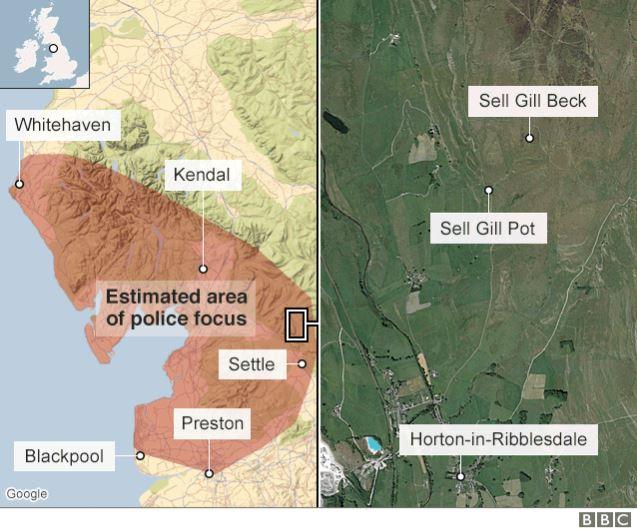
Mr Harland and his team believe the woman had been living in a rural community in north Lancashire or south Cumbria and was murdered by her partner, then dumped outdoors. The stream where she was found is a mile from the main road and several from the nearest town of Settle.
Tellingly, she wore a band on her wedding ring finger which, because of its high percentage of gold, was traced to Bangkok.
According to the Office of National Statistics, in 2004 there were 3,000 people in Cumbria and Lancashire who were born in a south-east Asian country.
Investigators made use of a unique database that produces profiles of killers based on previous murder cases.
It shows that most bodies are carried no more than 50m (164ft) from a vehicle and that most drivers dumping a corpse travel no further than between 50 and 80 miles (80 to 130km).
The location of her body was off a rocky track only accessible by a 4x4, suggesting the killer may have lived in a rural location.

You might also be interested in:

However, she was probably dumped in a more secluded spot and only became visible due to the heavy rain.
"That part of the Yorkshire Dales has its own microclimate," said fellow investigator and former detective, Max Jowett.
"We managed to track down a fell runner, who every morning would take a reading of the water level.
"When he gave us the charts it showed that there had been a massive spike in rainfall the 24 hours before she was found - enough to move a body."
Mr Harland maintains the killer was familiar with the area.
"If you came across this location by chance you'd maybe think about disposing the body in the cave," he said.
"But someone who knows this place would know that there's a metal grille at the bottom of the cave and that it's regularly visited by walkers.
"The likelihood is that she's been dead at home, they've needed to get rid of her quickly and they've brought her up here, over the hump and put her out of sight."
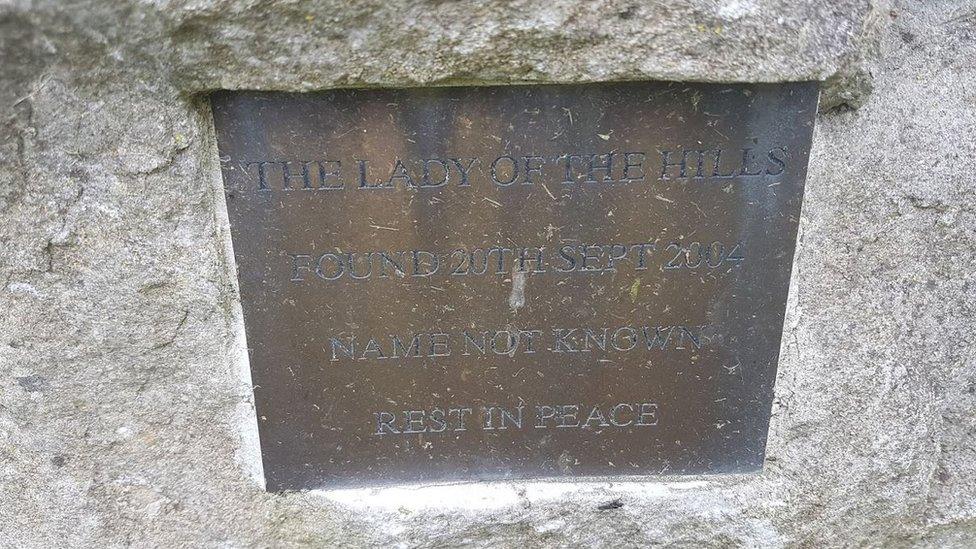
The local quarry donated a slab of limestone which was used for her headstone
The newest and most compelling evidence has come from advances in forensic science.
Stable isotope analysis was not available to the original inquiry team, but has determined where the woman spent the last two years of her life.
It involves examining the levels of carbon, oxygen, hydrogen and nitrogen - found in soils or drinking water - in samples of the hair, teeth or bones, which can provide information about where a person lived.
The tests on the woman's bones and teeth confirmed she grew up in south-east Asia, but a cutting of her hair showed isotopes found in only a few places in Britain - including in south Cumbria and the northern tip of Lancashire.
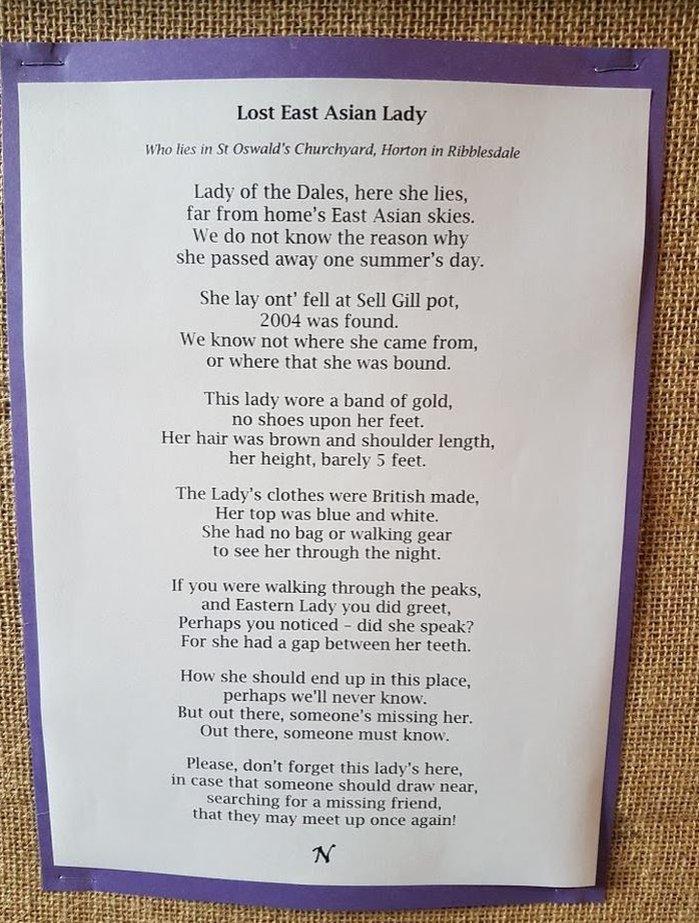
A poem by an unknown author surfaced after the woman's death

"We do not find the needle in the haystack but we reduce the haystack to a manageable size," said Prof Wolfram Meier-Augenstein, who carried out the tests.
"We provide investigators with information to enable them to focus their efforts on a few select regions, thus increasing the chances of getting a match on, for example dental records, or next-of-kin DNA."
Cases such as these are not so much about solving the crime by "that lightning bolt moment" but by building a theory based on the most likely explanation and probabilities, said Mr Harland.
"Often you're peering down the telescope the wrong way and wondering why everything looks so small," he added.
"Once we find out who this lady is and the last person associated with her, I imagine they'll have a fair bit of explaining to do.
"We don't have many unsolved cases. This is not an easy one to solve, but it is solvable."
Story edited by Lauren Potts